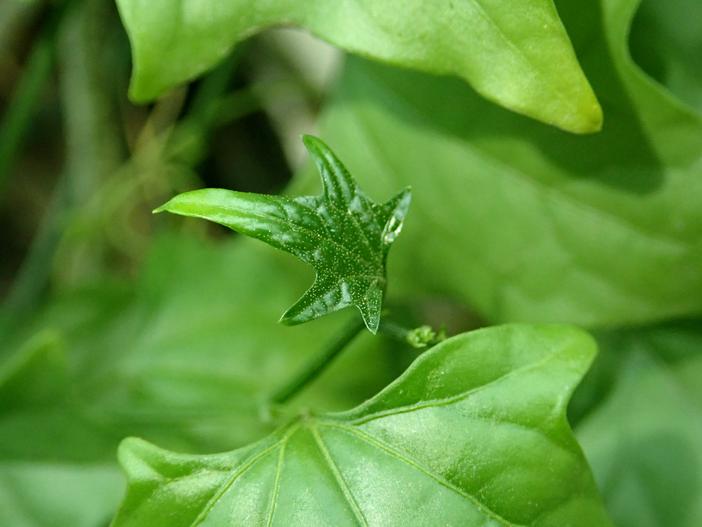Bigfoot
(Gerrardanthus macrorhizus)
Bigfoot (Gerrardanthus macrorhizus)
/
/

Salicyna
CC BY-SA 4.0
Image By:
Salicyna
Recorded By:
Copyright:
CC BY-SA 4.0
Copyright Notice:
Photo by: Salicyna | License Type: CC BY-SA 4.0 | License URL: https://creativecommons.org/licenses/by-sa/4.0 | Uploader: Salicyna | Publisher: Wikipedia Commons




































Estimated Native Range
Summary
Gerrardanthus macrorhizus, commonly known as Bigfoot, is a deciduous perennial vine native to the forest margins and rocky outcrops in the valleys of Southern Mozambique to Eastern South Africa. It can grow to a height and width of 15-25 feet (5-8 meters), with a robust, twining habit that allows it to climb over structures and vegetation. The plant is characterized by its large, fleshy, tuberous roots, which have given rise to its common name. Bigfoot produces inconspicuous brown flowers throughout the year, which are often overlooked due to their color and size.
Bigfoot is valued for its unique caudex and is often grown as a curiosity in pots or containers, particularly by enthusiasts of succulent plants. It is also used in tropical and subtropical gardens as an ornamental climber. In cultivation, it requires minimal water, making it suitable for xeriscaping and drought-tolerant gardens. It thrives in well-draining soil and prefers part shade to full shade, avoiding the harsh midday sun. While it is generally free from serious pests and diseases, overwatering can lead to root rot. Due to its vigorous growth, it may need to be pruned to keep it within bounds when grown in smaller spaces.CC BY-SA 4.0
Bigfoot is valued for its unique caudex and is often grown as a curiosity in pots or containers, particularly by enthusiasts of succulent plants. It is also used in tropical and subtropical gardens as an ornamental climber. In cultivation, it requires minimal water, making it suitable for xeriscaping and drought-tolerant gardens. It thrives in well-draining soil and prefers part shade to full shade, avoiding the harsh midday sun. While it is generally free from serious pests and diseases, overwatering can lead to root rot. Due to its vigorous growth, it may need to be pruned to keep it within bounds when grown in smaller spaces.CC BY-SA 4.0
Plant Description
- Plant Type: Vine
- Height: 15-25 feet
- Width: 15-25 feet
- Growth Rate: Moderate
- Flower Color: N/A
- Flowering Season: Spring, Summer, Fall
- Leaf Retention: Deciduous
Growth Requirements
- Sun: Part Shade, Full Shade
- Water: Very Low
- Drainage: Fast
Common Uses
Drought Tolerant, Low Maintenance
Natural Habitat
Native to forest margins and rocky outcrops in valleys in Southern Mozambique to Eastern South Africa
Other Names
Common Names:
Scientific Names: , Gerrardanthus macrorhizus, Gerrardanthus megarhizus, Gerrardanthus portentosa,
GBIF Accepted Name: Gerrardanthus macrorhizus Harv. ex Benth. & Hook.fil.